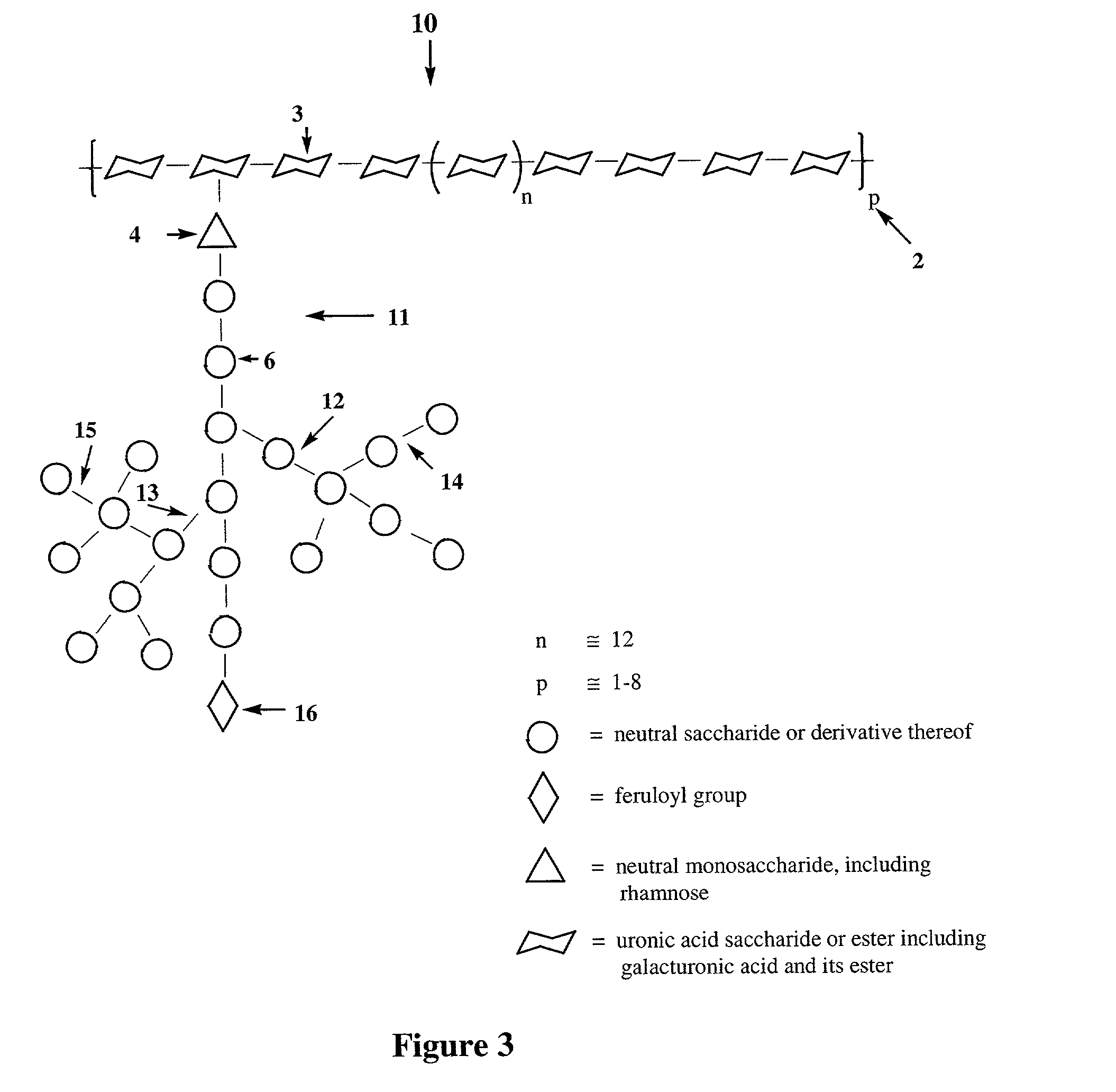Modified polysaccharides for treatment of cancer
a cancer and polysaccharide technology, applied in the field of cancer treatment, can solve the problems of ineffective curative therapy and very little palliative therapy for patients with metastatic disease, and the failure of patients to use non-cytotoxic oral agents, and achieve the effects of inhibiting metastasis and limited success
- Summary
- Abstract
- Description
- Claims
- Application Information
AI Technical Summary
Problems solved by technology
Method used
Image
Examples
example 1
Method of Modifying Naturally Occurring Polysaccharides.
[0060] A starting polysaccharide is treated with U.V. radiation for .about.48 hours to sterilize the material after which all further steps are conducted under sterile conditions. After irradiation the polysaccharide is slowly dissolved in distilled water and the amount of total carbohydrate is determined by the phenol sulfuric acid method (Fidler et al., Cancer Res., (1973), vol. 41, pp. 3642-3956.)
[0061] The pH of the polysaccharide solution is increased to pH 10.0 with, for example, 3N NaOH. After appropriate time intervals, for example a time course from 30 minutes to 48 hours, the pH of the solution is acidified to a final pH of about 3.0 with 3N HCl, for example. Again, after appropriate time intervals, for example a time course from 30 minutes to 6 hours, the pH of the solution is adjusted to a pH of about 6-7. Conditions are selected that give rise to a modified polysaccharide that has a molecular weight of 15 kD, 20 kD...
example 2
Determining the Molecular Weight of the Polysaccharide.
[0062] The molecular weights of the starting polysaccharide and the resulting modified polysaccharide are determined by viscosity measurements (Raz, A. et al., Cancer Res., (1981), vol. 41, pp. 3642-3647) at 26.degree. C. in an Ubbelohde No 1 viscometer with 20 mM sodium-hexametalphosphate at pH 4.5, 0.2% EDTA and 0.9% NaCl, according to the method of Christensen, Food Research, (1954), vol. 19, pp. 163-165.) Intrinsic viscosity (.eta.) is obtained by extrapolating the specific concentration values obtained to zero galacturonic acid concentration.
example 3
Quantities of Neutral Sugars From Starting Polysaccharide
[0063] To determine more exactly the composition of a polysaccharide, whether it be a starting material or chemically-modified product, total neutral sugars can be estimated from the difference between the m-hydroxyphenol method (Huang, R., Nature, (1978), vol. 276, pp. 624-626), and the total carbohydrate determined with phenol sulfuric acid (Albersheim, Carbohydrate Research, (1967), vol. 5, pp. 340-346).
[0064] The composition and the amount of individual neutral sugar can be obtained by hydrolysis in 2N trifluoroacetic acid. The respective alditol acetates can then be analyzed by gas chromatography (Albersheim, 1967).
PUM
| Property | Measurement | Unit |
|---|---|---|
| pH | aaaaa | aaaaa |
| pH | aaaaa | aaaaa |
| pH | aaaaa | aaaaa |
Abstract
Description
Claims
Application Information
 Login to View More
Login to View More - R&D
- Intellectual Property
- Life Sciences
- Materials
- Tech Scout
- Unparalleled Data Quality
- Higher Quality Content
- 60% Fewer Hallucinations
Browse by: Latest US Patents, China's latest patents, Technical Efficacy Thesaurus, Application Domain, Technology Topic, Popular Technical Reports.
© 2025 PatSnap. All rights reserved.Legal|Privacy policy|Modern Slavery Act Transparency Statement|Sitemap|About US| Contact US: help@patsnap.com



